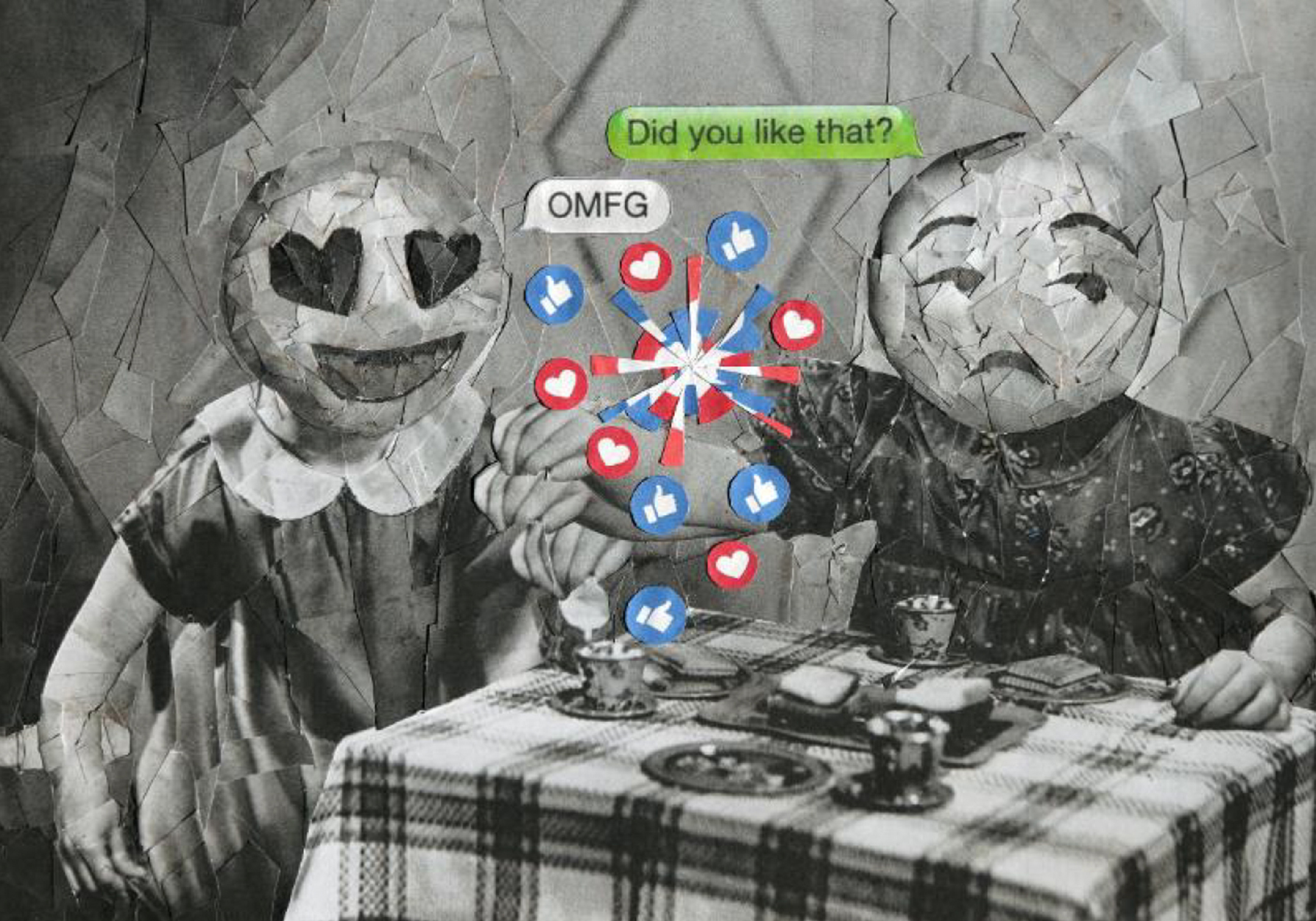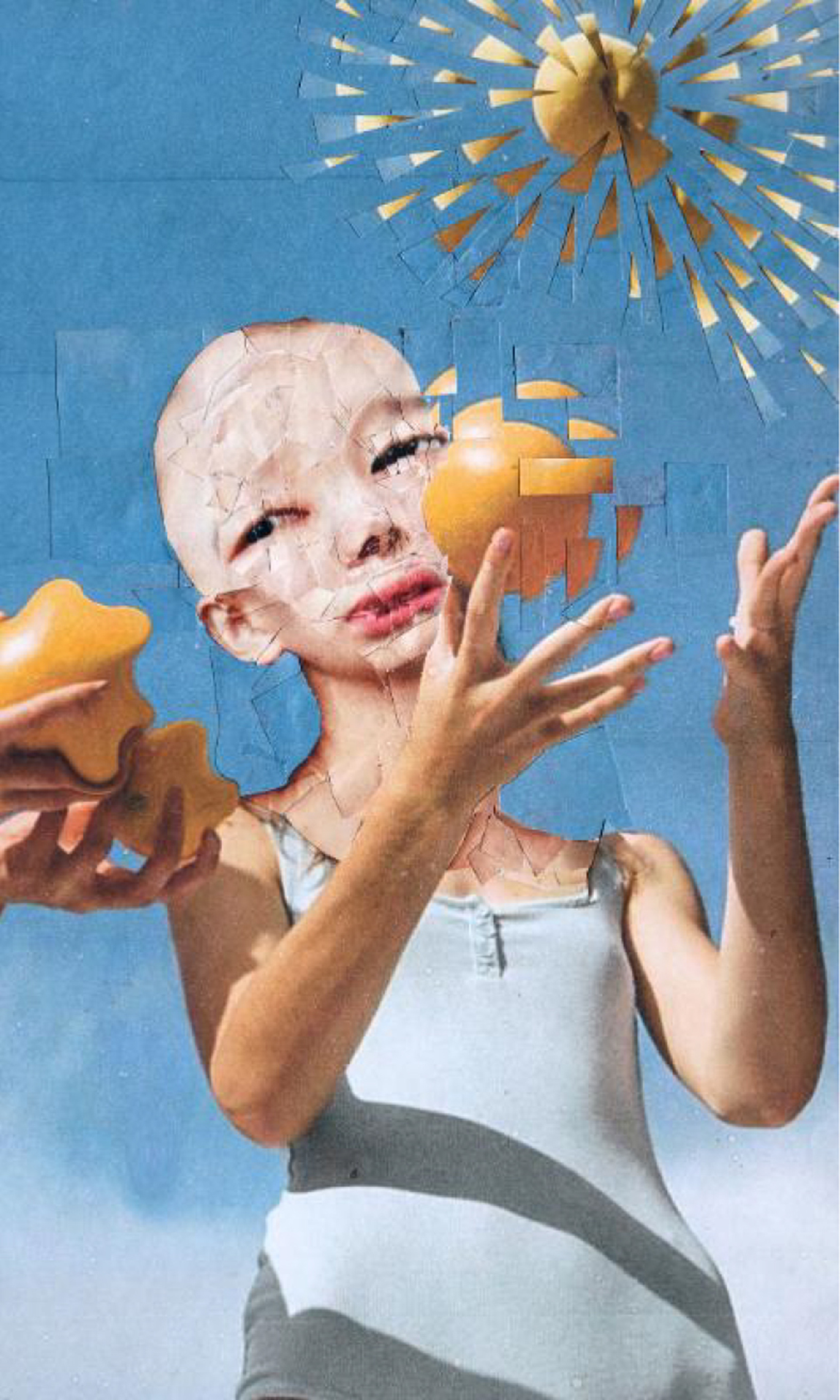AP Art of the Week
Spotlight on Artist Aidan Sung
Welcome to The Elective’s digital art museum, dedicated to the incredible work of AP Arts students. This week we feature a collage made by Aidan Sung from Asia Pacific International School in Seoul, South Korea.
Welcome to The Elective’s digital art museum, dedicated to the incredible work of AP Arts students. Each week we highlight a work or series created in one of the AP Arts concentrations—AP 2-D Art and Design, 3-D Art and Design, and AP Drawing (the AP Program also offers Art History and Music Theory)—as well as a statement from the artist (and, occasionally, their teacher).
From the first cave paintings to contemporary breakthroughs in virtually reality, art, in all its forms, has been a crucial way for people to process, make sense of, comment on, and grapple with the world around them. After more than a year of life in a pandemic, AP Art students have risen to the challenge of processing and making sense of the challenges—and opportunities—that have come from this perilous time. The work they submitted in their final portfolios is explicitly of the moment. It’s often challenging and provocative, but always insightful, inspiring, and expansive.
This week we feature a collage made by Aidan Sung from Asia Pacific International School in Seoul, South Korea.

Here’s Aidan’s statement on the work:
“Throughout the investigation, I distorted figures to depict the various struggles of individuals during adolescence, experimenting with the rhythm of shapes to express human emotion. Although I started my investigation focusing solely on emotions of individuals, I further expanded my works to interpersonal struggles.
“Using original photography and found images, I created this distorted room scene and layered in a stretched face to express the loneliness of isolation during quarantine. First I shattered the figure into pieces, then expanded the furniture, and finally layered in the face through collaging.
“For the first two works in my investigation, I portrayed identity crises by fragmenting images to pieces. Early on I discovered that shattering images was not impactful enough, so I experimented with combining contrasting images for uncanny effect. In one image, I augmented the shape of the figure and experiment with the fluidity of facial structure to convey stress during youth. As my works developed, I portrayed more of the conflicts from interpersonal relationships through surreal compositions. I furthered this skill by changing faces to wisps of smoke in another image. This revision led me to explore the movement of objects, transforming them into one another. Eventually, I combined the fragmenting technique and augmenting skills from previous pieces to convey a story rather than individual emotions.”
And here are a few other works from Aidan’s portfolio:

Using original photography and found images, which I collaged on hardboard, I juxtaposed Seoul and buildings of New York to show the struggle as multicultural Asian Americans.

For this found-image collage, I portrayed the pressure of social media presence and desire for attention in younger generations, simplifying faces into emoji and integrated icons that represent the social media-driven world.

In this found-image collage, I distorted the face by blocking out and augmenting facial features to depict interpersonal conflicts.

In this digitally altered paper collage, I stretched the oranges after physically distorting the face and fragmenting the fruits.

Another found-image collage, I distorted the face and shattered the figures' eye areas into pieces to highlight jealousy.

Using original photography and found images, this collage distorts the face and merges it into the monitor to express the heavy reliance on tech and media.

This is a print of an original photograph, which I then layered with gesso and acrylic paint on the two fragmented figures to visualize a judgmental society.
Student statements are lightly edited for length and clarity.


